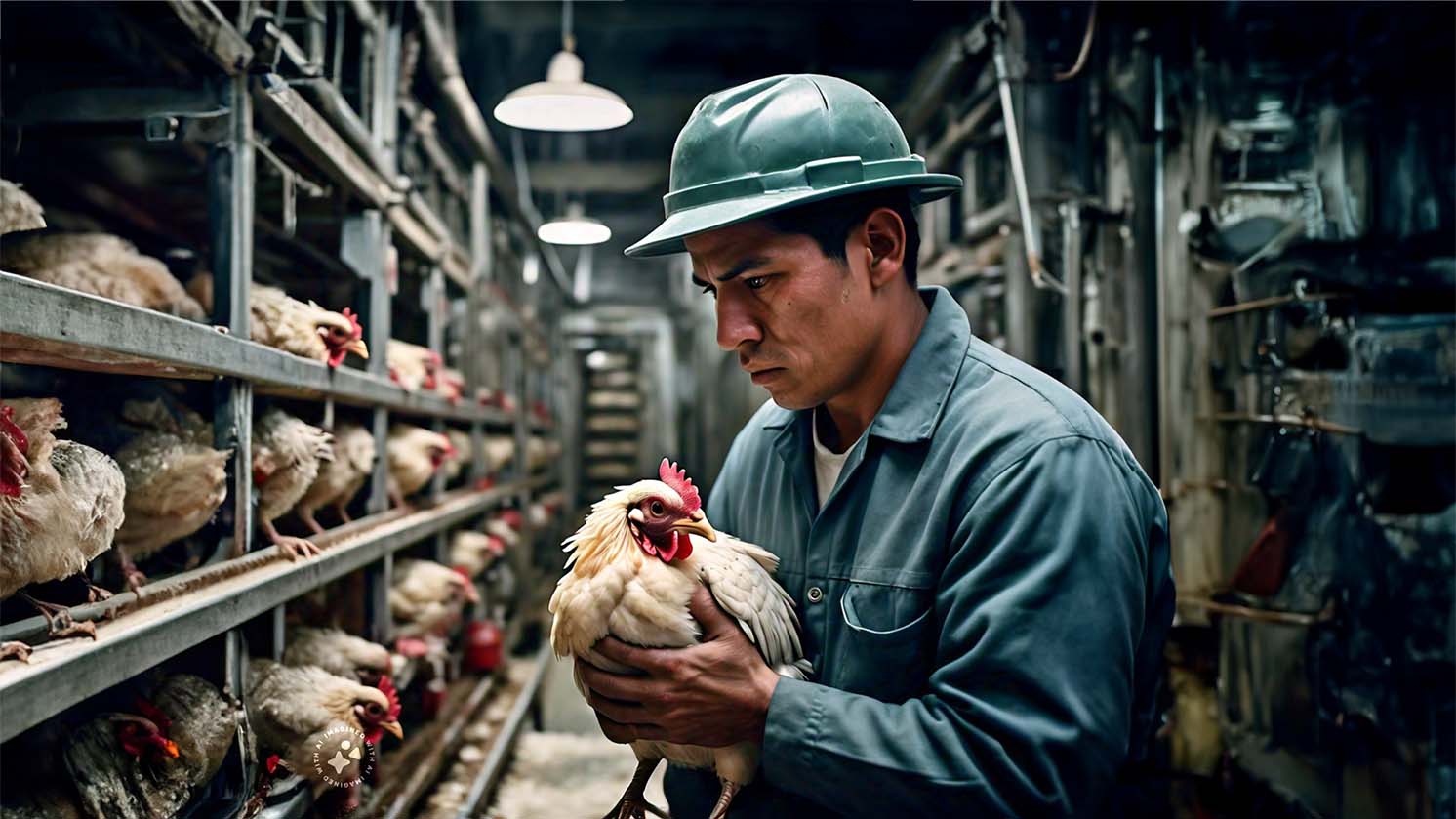Three industrial farmworkers have fallen ill to Avian Influenza since 2022. All three workers were employed by large-scale factory farms, where H1N5 may have been circulating for up to four months before discovery.
Bird flu contracted by humans
Human affected H5N1’s primary symptom appears to be conjunctivitis, ie pink eye, and all three cases healed up quickly.
In 2022, Bird Flu’s first detected case of transmission between birds to humans affected an incarcerated worker in Colorado. His employer was a poultry production facility managing a flock of 47,300 turkeys. This worker was given anti-virals and healed up quickly.
In April 2024, the second case of human affected Bird Flu struck a farm worker employed by a large-scale industrial dairy in Texas. He experienced a painful case of pink eye followed by a quick recovery.

In May 2024, a third case has been identified in Michigan. Though details are limited, this worker was also working on an industrial farm managing a massive number of cattle. His only symptom was pink eye and has since fully recovered.
Industrial farm work is risky
In 2023, approximately 2.3 million workers were employed in agriculture and related industries in the U.S.
Between 2021-2022, there were 21,020 injuries in agricultural production that required days away from work. There is well-known underreporting of injuries in this industry.
Almost one-third (29%) of injuries in agricultural production that required days away from work from 2021-2022 were from falls.
In 2014, An estimated 4,000 youth were injured while working on a farm.
In 2022, workers in the agriculture, forestry, fishing, and hunting industry had one of the highest fatal injury rates (18.6 deaths per 100,000 full-time equivalents), compared to 3.7 deaths per 100,000 FTE for all U.S. industries.
In 2023, an industrial dairy owner and then-President of the Utah Farm Bureau back-handed one of his farm workers for complaining about late pay. This farm worker, alongside others, was discovered to be living in an old desert home on the property with a full septic tank. The apparent human trafficking in this situation is widespread in the United States.
Raw milk is safer than working on a factory farm
In recent legislative hearings, the opposition to raw milk legalization explained that an estimated 10.6 million people consume raw dairy products in the United States. 761 got sick, with anything as small as a stomach ache. 22 hospitalizations were documented, and no deaths.
When microbiologists on social media examine two examples of fluid milk in a vacuum, one sterilized and one not sterilized, it’s easy to see why they choose the sterilized option. This narrow point of view is confined to their limited focus and doesn’t account for the greater food systems.
When industrial corporations bottleneck every dairy producer in the state, our options are limited, and changing the situation is a monumental task.
When we can pick between a handful of raw milk farmers in our area, good practices are rewarded in real-time, while bad practices lose support and end up isolated before falling away.
